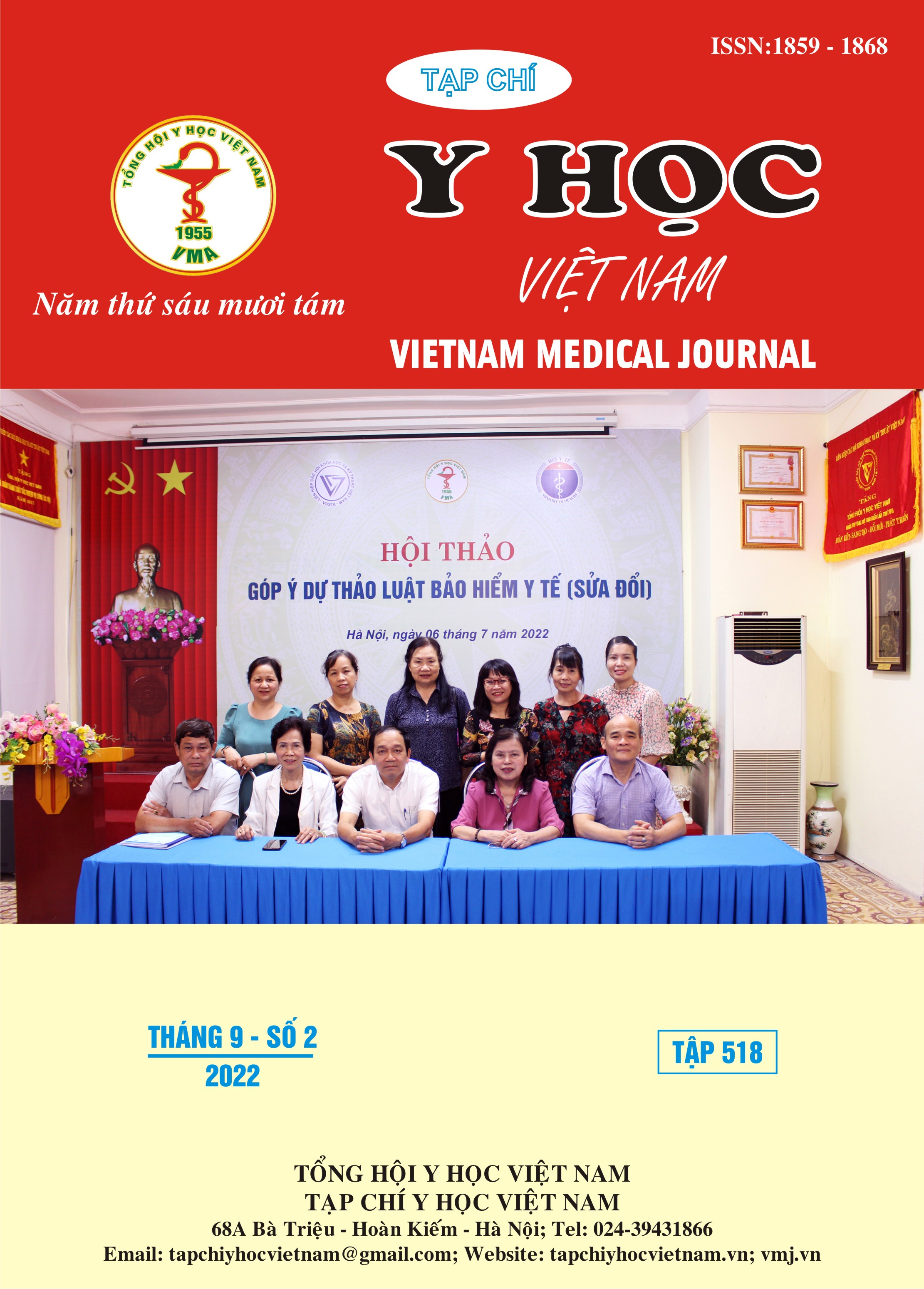THE INITIAL RESULTS ASSESSMENT OF SOME SOFT TISSUE VENOUS MALFORMATIONS BY PERCUTANEOUS ABSOLUTE ETHANOL USING DSA
Main Article Content
Abstract
Objectives: Describe imaging characteristics of soft tissue venous malformation on digital subtraction angiography (DSA) and evaluate the effectiveness of absolute ethanol.Methods: Retrospective and prospective cohort from July 2020 till May 2022 on 34 patients treated by DSA-guided percutaneous sclerotherapy using absolute ethanol. Patients after the intervention were followed up and evaluated the results of the sclerotherapy method after one month and three months later based on the following parameters: percentage of sclerosing of malformation and VAS pain score (Visual Analog Scale) pre-and post-treatment. The data is analyzed and processed by using SPSS 20.0. Results: The study includes thirty-four patients (9 men and 24 women) with soft tissue venous malformations. The mean age was 29.6 ± 16.9 years (range from 10 to 64 years). The classification of the malformation was analyzed based on the features of drainage venous, which was classified according to the classification of Puig et al. 2003. Among 34 lesions, there were 5/34 type I (14.7%), 24/34 type II (70.6%), 3/34 type III (8.8%), and 2/34 type IV lesions (5.9%). The total number of treatment sessions was 63, with 79.4% of patients having a sclerosed malformation percentage above 50% and 20.4% of patients having less than 50% sclerosed malformation percentage. After treatment, 94.1% of patients had an improvement in pain level, of which 95.7% of patients with moderate and severe pain improved their pain level to a mild pain level, with only one patient (4.3%) maintaining severe pain levels. Conclutions: DSA-guided sclerotherapy using absolute ethanol is an effective technique for treating soft tissue venous malformations.
Article Details
Keywords
venous malformation, absolute ethanol, DSA
References
2. Cahill AM, Nijs ELF. Pediatric Vascular Malformations: Pathophysiology, Diagnosis, and the Role of Interventional Radiology. Cardiovasc Intervent Radiol. 2011;34(4):691-704. doi:10.1007/s00270-011-0123-0
3. Behravesh S, Yakes W, Gupta N, et al. Venous malformations: clinical diagnosis and treatment. Cardiovasc Diagn Ther. 2016;6(6):557-569. doi:10.21037/cdt.2016.11.10
4. Colletti G, Ierardi AM. Understanding venous malformations of the head and neck: a comprehensive insight. Med Oncol. 2017;34(3):42. doi:10.1007/s12032-017-0896-3
5. Legiehn G. Sclerotherapy with Adjunctive Stasis of Efflux (STASE) in Venous Malformations: Techniques and Strategies. Tech Vasc Interv Radiol. 2019;22:100630. doi:10.1016/j.tvir.2019.100630
6. Baek HJ, Hong JP, Choi JW, Suh DC. Direct Percutaneous Alcohol Sclerotherapy for Venous Malformations of Head and Neck Region without Fluoroscopic Guidance: Technical Consideration and Outcome. Neurointervention. 2011;6(2):84-88. doi:10.5469/neuroint.2011.6.2.84
7. Orlando JL, Caldas JGMP, Campos HG do A, Nishinari K, Wolosker N. Outpatient percutaneous treatment of deep venous malformations using pure ethanol at low doses under local anesthesia. Clin Sao Paulo Braz. 2010;65(9):837-840. doi:10.1590/s1807-59322010000900004
8. Jarrett DY, Ali M, Chaudry G. Imaging of vascular anomalies. Dermatol Clin. 2013;31(2):251-266. doi:10.1016/j.det.2012.12.004
9. Steiner F, FitzJohn T, Tan ST. Ethanol sclerotherapy for venous malformation. ANZ J Surg. 2016;86(10):790-795. doi:10.1111/ans.12833
10. Shireman PK, McCarthy WJ, Yao JST, Vogelzang RL. Treatment of venous malformations by direct injection with ethanol. J Vasc Surg. 1997;26(5):838-844. doi:10.1016/S0741-5214(97)70098-3


